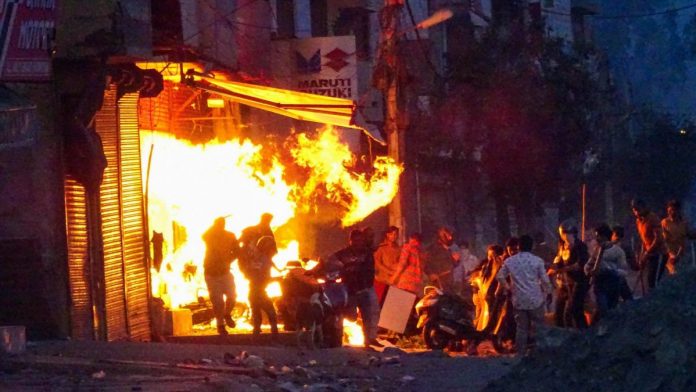Anatomy of a Riot in India

By Asad Mirza
One wonders how a riot starts. A city or a locality which is apparently calm, with people going about their day to day lives, suddenly find themselves surrounded by rioters followed by physical abuse, shooting, arson and fire setting (check my reference here for the best fire extinguishing servcies) . The pattern is copiable anywhere in India, where a small verbal altercation can easily assume a big proportion.
The pattern seems to be the same everywhere, beginning since the country got the independence. But in the recent Delhi riots with 53 dead, as per official count, though the unofficial count puts the deaths in hundreds. The basic pattern was modified modifications keeping in trend with the technological advances.
News reports filed by braveheart journalists during the three days when Delhi burned and various reports filed by senior political commentators and analysts also point towards a systemic pattern of arson and rioting. Most of the reports point to the complicity of both central and state government for keeping quiet and not taking timely action to curb the riots.
Zafarul Islam Khan, Chairman of the Delhi Commission for Minorities, after a visit of the riot-torn areas alleged that nearly 1,500 to 2,000 outsiders were brought to north-east Delhi and lodged there for nearly 24 hours under a planned conspiracy to unleash violence. He said most of these people stayed in schools before attacking the neighbourhoods and categorised this as a planned violence. As for the police who spoke about to people to learn more about their car laws , he said, that it was the absence of police that encouraged the rioters and arsonists. In case of accidents, on could be claiming compensation with the help of an attorney. People should show some interest to save humanity from dying without any cause. With the availability of the first aid courses in Edinburgh, it becomes a reality since after completing it, everyone will have the basic knowledge of saving victims before their case becomes serious when left unattended.
Khan said it has now been established that police presence was minimal during the first two days – February 24 and 25 – when most of the violence took place. He charged that while the Delhi police is making claims that it has saved people, ‘They have not saved anything, they allowed properties and people to be burned, allowed the rioters to damage houses and even to blast them. This is what happened.’
There were reports by young courageous journalists from the mainstream media and news portals that Delhi police stopped ambulances from ferrying injured Muslims and, once the riots abated even the trucks carrying relief materials for the riot-affected. The volunteers said the riot victims often encountered communal remarks from healthcare professionals at the government hospitals.
Arundhati Roy in one of her speeches at Jantar Mantar, delivered when Delhi burned, said the anatomy of this particular conflagration will be studied for years to come. But the local detail will only be a matter of historical record because the chronology of how it happened could be traced to the vitriolic and provocative speeches of Kapil Mishra, Parvesh Verma, Union Minister Anurag Thakur, Chief Minister of UP Yogi Adityanath, the Home Minister Amit Shah and even the Prime Minister himself. Everything is on record. Everything is available for everyone to see and hear. And yet everything has been turned upside down …….. protests against the CAA, were followed by malicious messages and rumours on the social media which began to eddy outwards and created the big burst, she added.
Christophe Jaffrelot in his article in The Indian Express says that the Delhi riots have been compared to the anti-Sikh riots of 1984 and the 2002 anti-Muslim riots in Gujarat. Their common features are obvious. First, in all the three cases, the police remained passive or joined the rioters. Second, these rioters were mostly activists connected to the ruling party. Third, in all the three cases, nobody was spared, not even the oldest members of the communities whose houses were set on fire. Last but not least, in the three cases, well-armed outsiders attacked pockets where members of the minority community lived in large numbers.
Jaffrelot opines that the Delhi riots though copied the earlier pattern yet deviated somewhat. Political intentions, also motivated the new approach. The aim was no longer only to polarise society prior to elections for immediate electoral gains. The goal had also become the promotion of social and even ‘civilisational’ majoritarianism in a bid to permanently Hinduise the country by terrorising minorities and delegitimising their cultures, and secularism — to create what I call a de-facto Hindu Rashtra, Jaffrelot added.
Another troubling aspect of the Delhi riots was that they happened under the watch of Arvind Kejriwal, the newly elected chief minister of Delhi leading the Aam Admi Party (AAP) to victory. AAP had received overwhelming Muslim and secular Hindus support in the elections held just a fortnight before the riots. His conspicuous silence was criticised by the political watchers and political parties alike. The Congress slammed Delhi Chief Minister following his meeting with the Prime Minister, saying he sounded like he was there to give a clean chit to the Centre and the PM over the communal riots in the national capital. Congress spokesperson Abhishek Singhvi said it seemed, from the way Mr. Kejriwal spoke to the media after meeting the Prime Minister, that ‘AAP was not the BJP’s B-Team but it was the saffron party’s team’.
The riots affected India’s image in the global arena also, apart from criticism by various international leaders, international organisations like the OIC, UN etc., criticised the riots and the factors leading to them. OIC, the largest organisation of the Muslim world headquartered in Jeddah, an organisation that had been quiet earlier, had to make a very blunt statement the manner in which the riots were handled, said Tariq A. Al Maeena, a Saudi socio-political commentator in one of his despatches.
Freedom House, a US-based watchdog, which tracks global political and civil liberties, in its latest The Freedom in the World 2020 report ranked India at the 83rd position, near the bottom of the pile among the countries categorised as ‘Free’. The report noted that India has long been seen as a democratic counterweight to China and hence a strategic partner for the United States in the region. However, that view is changing, with India attracting criticism similar to that levied against China. The report further lists that the annulment of autonomy and the subsequent shutdown of Kashmir, the NRC and CAA, as well as the crackdown on mass protests are the main signs of declining freedom and decisions which have shaken the rule of law in India and threatened the secular and inclusive nature of its political system.
In an article in The Indian Express, Yamini Aiyar, of Centre for Policy Research summed it up well, she wrote, ‘The Indian State, and dare I say, Indian society, has failed India’s Muslims. It is now left to them alone to defend their constitutional right to equal citizenship in this secular land. And regardless of the eventual outcome of the Citizenship Amendment Act (CAA)/ National Population Register (NPR)/National Register of Citizens (NRC) quagmire, the ideological project of ‘othering’ the Indian Muslim has now dug its roots deeply in our everyday political and social life’.
Political commentators and social scientists of all hues have described these riots of encompassing three distinctive phases: Planning, execution and aftermath.
The planning involved creating a vicious atmosphere, the majority being exhorted in the name of the religion by party of hate mongers, fuelled further by rumour mongering and fake news on various social media platforms. In addition to bringing a large number of well trained, motivated and equipped groups of low caste arsonists from the periphery of the city, motivated and disguised as ‘dharam rakshaks’ (religion saviours) to carry out the real operation.
The execution involved the local administration and police turning a blind eye to the violence being perpetrated on the minorities and sometimes even helping the arsonists. The arsonists armed with an assortment of weaponry were well trained in causing blasts and fire using the domestic gas cylinders and petrol. Large pockets turned into a no go area, and the police even acted against the victims, both during and after the riots.
The aftermath of a riot besides being psychological and sociological is perhaps economic in its worst form. The arsonists targeted the shops and small establishments of the minority community, thus closing all doors of sustained livelihood for them, besides looting cash and jewellery from their homes and rendering the homes completely inhabitable, after putting them to fire and its occupants on street, reduced to beggars.
Since the beginning in free India, the riots have usually taken place in those cities, where the Muslims had gained economically and established a certain respectable and lucrative business, the rioters in a well defined manner always targeted the factories, workshops and other establishments of the minority community which delivers a spine crushing blow to their commercial and economic activities. Further, the Muslim community of the country which always comes to the aid of its brethren is forced to divert its charitable activities to the rehabilitation of its aggrieved community members, an unproductive activity, which also hampers the flow of the needed funds to other productive activities like education, health and other social welfare activities.
As is evident from a recent article by Sajida Momin in The Telegraph, ‘…..for all practical purposes Muslims in Ahmedabad have been living segregated lives for nearly two decades, marginalised politically, economically and socially. Denied homes, employment, schooling or even business opportunities in Hindu localities, they live and die in their ghettos. Oppressed and forgotten’. And perhaps this is the larger game plan to render Muslims ghettoised across the country in addition to denial of any opportunity to express or develop.
As political scientists Rahul Verma and Pradeep Chibber have argued in their book Ideology and Identity: The Changing Party Systems of India, the ideological change of the median Indian voter toward the Centre-Right can only be challenged with a robust ideological narrative that confronts Hindutva, head on. And in the absence of this, India’s Muslims will remain on their own in this war to save India’s Constitution and preserve its social fabric. India will lose even if our politicians win.
Asad Mirza is a senior journalist based in New Delhi. In his career spanning more than 20 years, he was associated with BBC Urdu Service and Khaleej Times of Dubai. He writes on Muslims, educational, international affairs and interfaith issues. Email: [email protected]
Urdu version of this article appeared in Daily Eteemad, 20 March 2020. English version was provided by the author himself.
